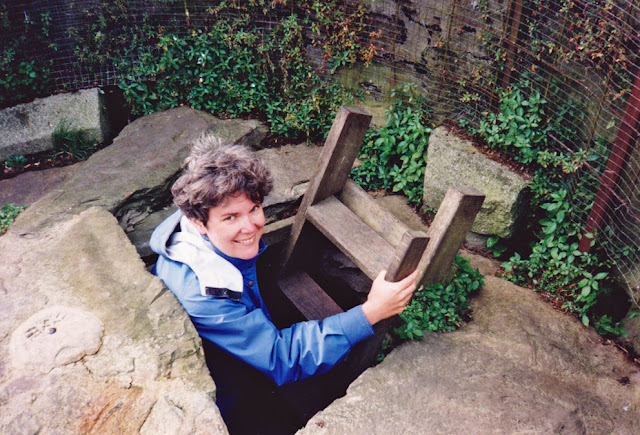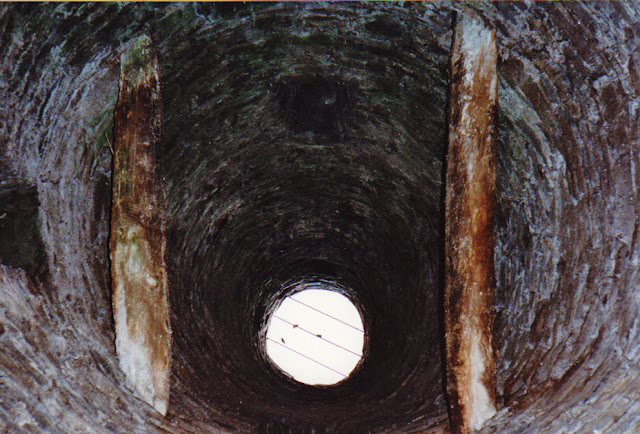Round towers are iconic, and interesting structures. Serving as a bell-tower (and possibly a place of refuge), many have survived intact for centuries. The first one I visited was at Ardmore in the south of Ireland, where I was disappointed to find that the interior was off-limits to the public. Oh how I wanted to climb that 100-foot tower, like the monks of old, to enjoy the view over Ardmore Bay.
Like Ardmore, most of the intact towers are locked up, but in the years since that visit to Ardmore I have been able to climb a couple in Ireland that are open to the public: Kildare and Devenish Island.
 |
| Kildare - a tourist waving from the top |
 |
| Top of Kildare |
 |
| Devenish |
Built between the 9th and 12th centuries, there were about 120 round towers in Ireland, 20 or so still in good shape. Outside of Ireland there is one at Peel on the Isle of Man (Man's closest point to Ireland), and three in Scotland: Brechin, Abernethy and Egilsay. Of the three Scottish towers, the only one you can climb is Abernethy. Unfortunately Brechin is locked up tight, and the tower on Egilsay is hollow.
 |
| Brechin |
 |
| Inside Egilsay tower |
 |
| Abernethy Tower - tourists waving from the top |
There is another Scottish round tower I've climbed: a miniature replica built in 1914 on Canna. There are no floors inside Canna's tower, just a series of stones embedded in its wall that can be used to climb to the bell.
 |
| Canna tower |
 |
| Inside Canna tower |
There is one more round tower replica in Scotland that deserves mention. Built in 1912, it commemorates a turning point in the history of the islands, and Scotland: The Battle of Largs.
 |
| Largs Tower |
The round tower of Largs stands 60 feet tall, and overlooks Largs' Marina. I paid a visit to it after spending several days exploring the Cumbrae islands. As I approached the tower along the shore path I had hopes I could climb it, but once I stood below the padlocked door, which was 10 feet above the ground, it was readily evident that that was not going to happen. Even though it was off limits, the entrance was amazing, as they replicated the exquisite stone doorway carvings of the Brechin tower.
 |
| Brechin doorway (1990) |
 |
| Largs Doorway |
Later I would learn from Magnus Magnusson's Scotland: The Story of a Nation (2000) that, even if I had the key and a step-ladder, it's not possible to climb the Largs tower:
The only access is through a pad-locked oaken door, two and a half metres off the ground. Inside, there is absolutely nothing, apart from a generous legacy of guano, bequeathed by the local pigeons who use the memorial as a convenient dovecote. There were originally four wooden floors, which allowed access by ladder to the 'look-out' floor at the level of the small window at the top, but the flooring has long since been removed for safety.
The Battle of Largs was a significant turning point in the history of the isles. I like the perspective put on this by Don Alick 'Splash’ MacKillop in his Sea-Names of Berneray:
When we, in the Western Isles, lost the Battle of Largs, it spelt the beginning of the end of the Norse influence in these islands, and all that is left today is their language in place-names and their blood in the veins of the islanders.
 |
| Don Alick (Splash) MacKillop - RIP: 1931-2009 |
In the words of Splash, despite the Battle of Largs, Norse blood, and place names, still figure prominently in the isles.














No comments:
Post a Comment